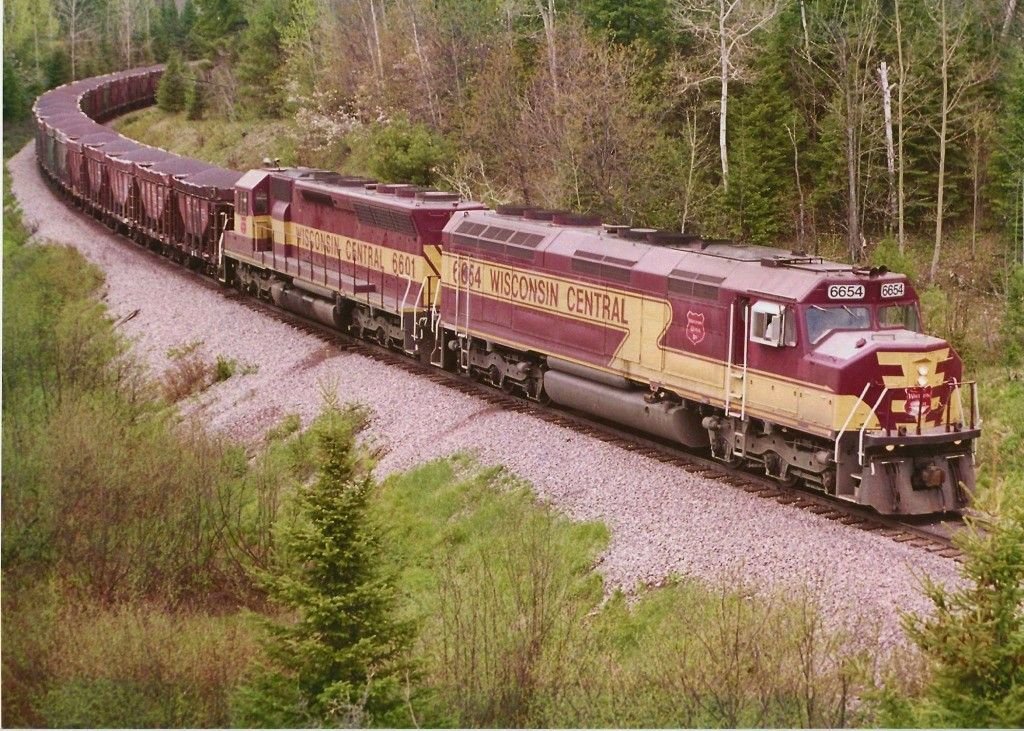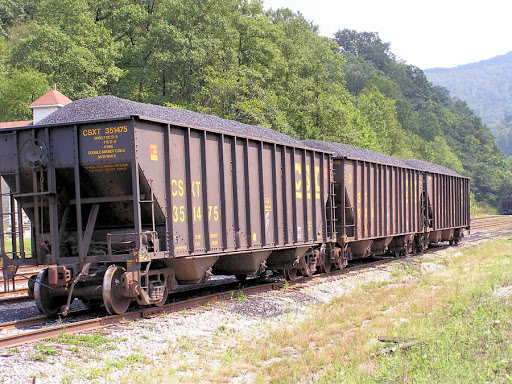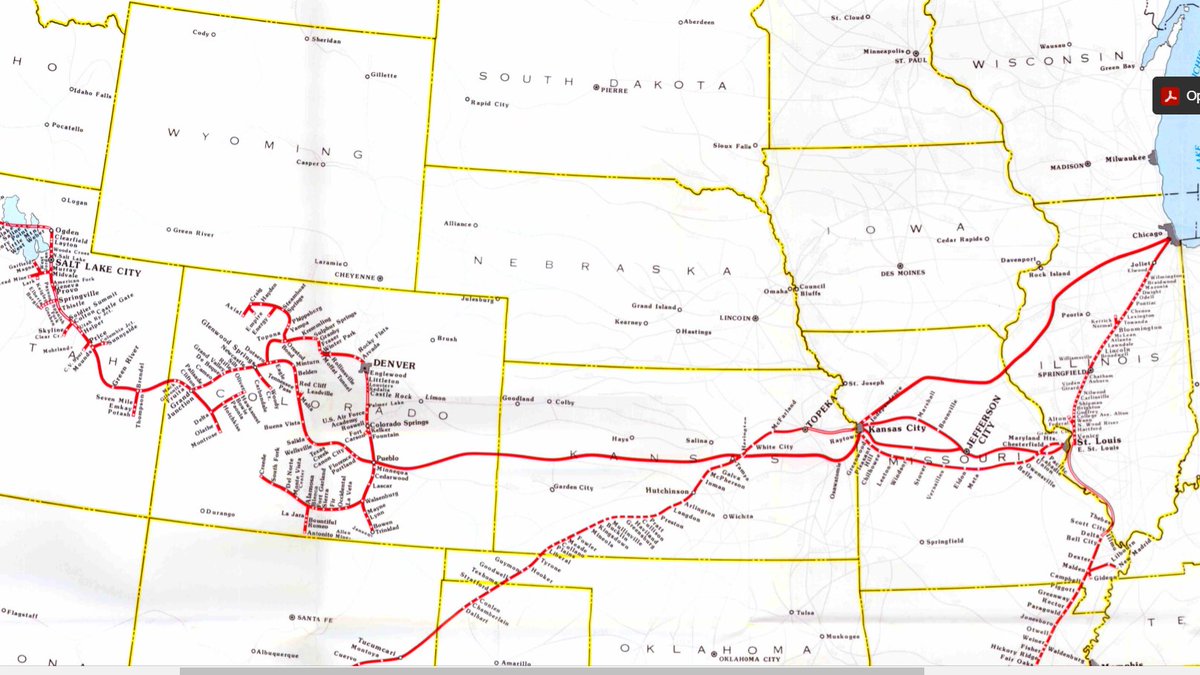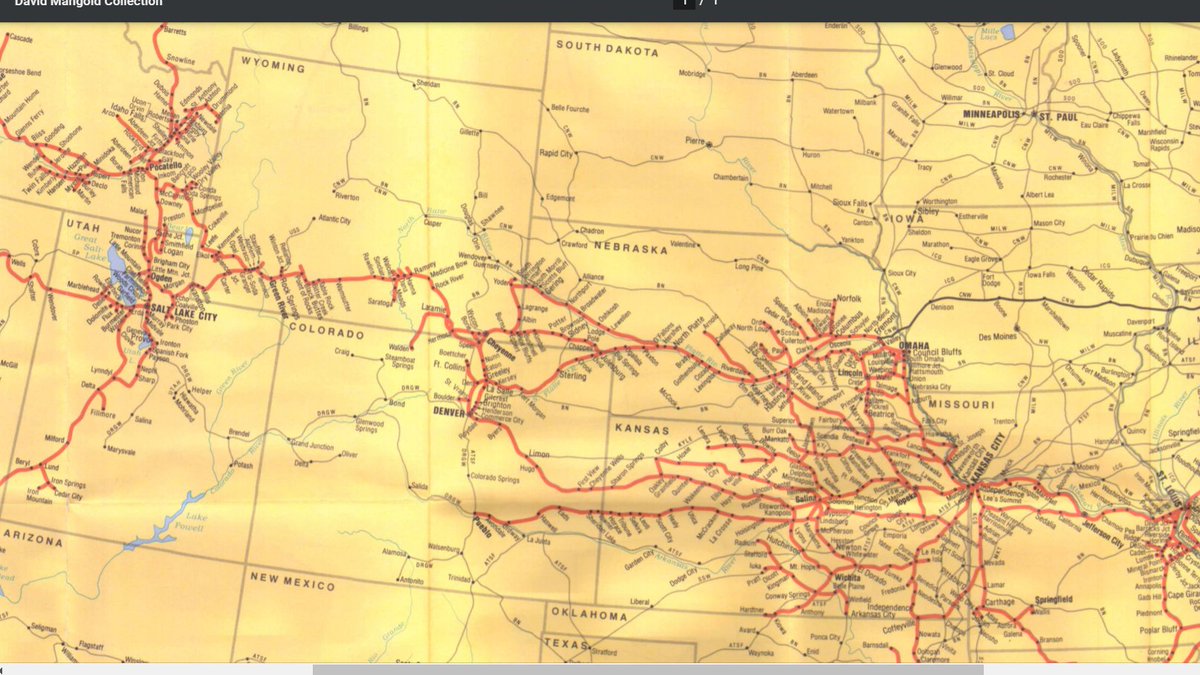The sharp-eyed among you may notice in the quote-tweeted photo that the hoppers behind the loco are not your iron ore hoppers (see image). They are, instead, coal hoppers! There's a fantastic story behind this apparent inefficiency: https://twitter.com/BlessedTrains/status/1342196823692353541
The train in the image was a long distance ore train from mines along the Wisconsin Central to the now-demolished Geneva Steel plant south of Salt Lake City in Utah.
Unlike most US ore trains, which (at least when the lakes are ice-free) shuttle between iron mines/steel mills and ports on the Great Lakes, this one was moving over a long haul.
A longer haul means higher revenue for the railroad, but also higher costs; once you've unloaded your train, you have to move those now-empty ore hoppers all the way back to the MN ore mines, which means $$$ with no revenue.
The solution to that problem lay in the Rockies' coal fields. Union Pacific (which held the contract for the ore for years) would bring the ore to Utah in coal hoppers, and then have said hoppers backhaul coal from mines along their main line through southern WY to the midwest.
(you couldn't fill ore hoppers with coal, bc they're tiny + thus inefficient for anything but the densest of commodities)
However, as production in the Powder River Basin of NE WY exploded during the 80s and 90s, production at mines in Southern WY (along the UP main) decreased, and UP's base of backhauling coal customers dwindled to nothing.
This meant higher costs -- and provided an opening for the Southern Pacific and Wisconsin Central to steal traffic from the UP (which was working with the Chicago and Northwestern).
Historically, the SP (and the DRGW, which had been absorbed by the SP in 1988, before it) had a difficult time competing with UP for movements such as this one. The UP's crossing of the Rockies (pic 2) was less tortured than the SP/DRGW (pic 1), with gentle grades + few curves.
However, as coal traffic diminished on the UP, this sinewy route came to have an advantage: a still-active base of coal mines in CO and UT. This allowed the SP to fill hoppers returning east from Utah, and thus made their crappy route viably competitive with UP.
And compete, they did! The train in the pic in the quote-tweet was the result of SP and Wisconsin Central successfully taking away the ore contract from UP. Trains would run west with ore, and come back east with Rocky Mountain coal.
That's why you see coal hoppers on an ore train -- and also why that train is being pulled by WC locomotives.
Sources:
http://www.drgw.net/rmrrc/1997/newsletter-450-mar1997.pdf
https://www.uprr.com/aboutup/history/decision.pdf
https://www.google.com/books/edition/Surface_Transportation_Board_Reports/uqGqQtp0lrsC?hl=en&gbpv=1&dq=geneva+steel+taconite+trains+tennessee+pass+%22backhaul%22&pg=PA313&printsec=frontcover
+ a trains mag article I don't believe I'm allowed to distribute
http://www.drgw.net/rmrrc/1997/newsletter-450-mar1997.pdf
https://www.uprr.com/aboutup/history/decision.pdf
https://www.google.com/books/edition/Surface_Transportation_Board_Reports/uqGqQtp0lrsC?hl=en&gbpv=1&dq=geneva+steel+taconite+trains+tennessee+pass+%22backhaul%22&pg=PA313&printsec=frontcover
+ a trains mag article I don't believe I'm allowed to distribute

 Read on Twitter
Read on Twitter





